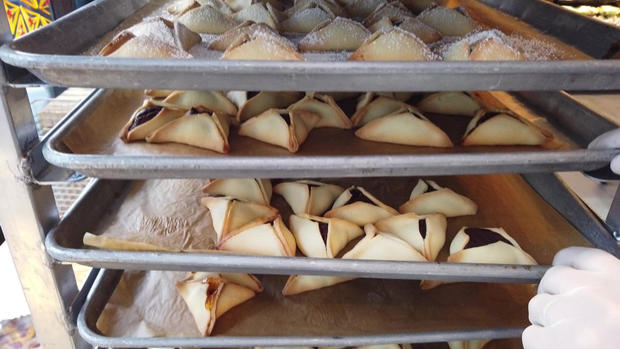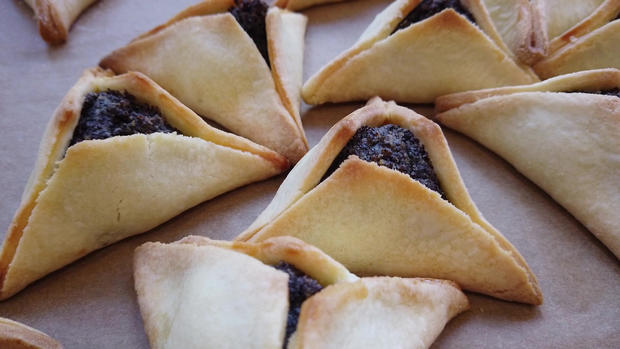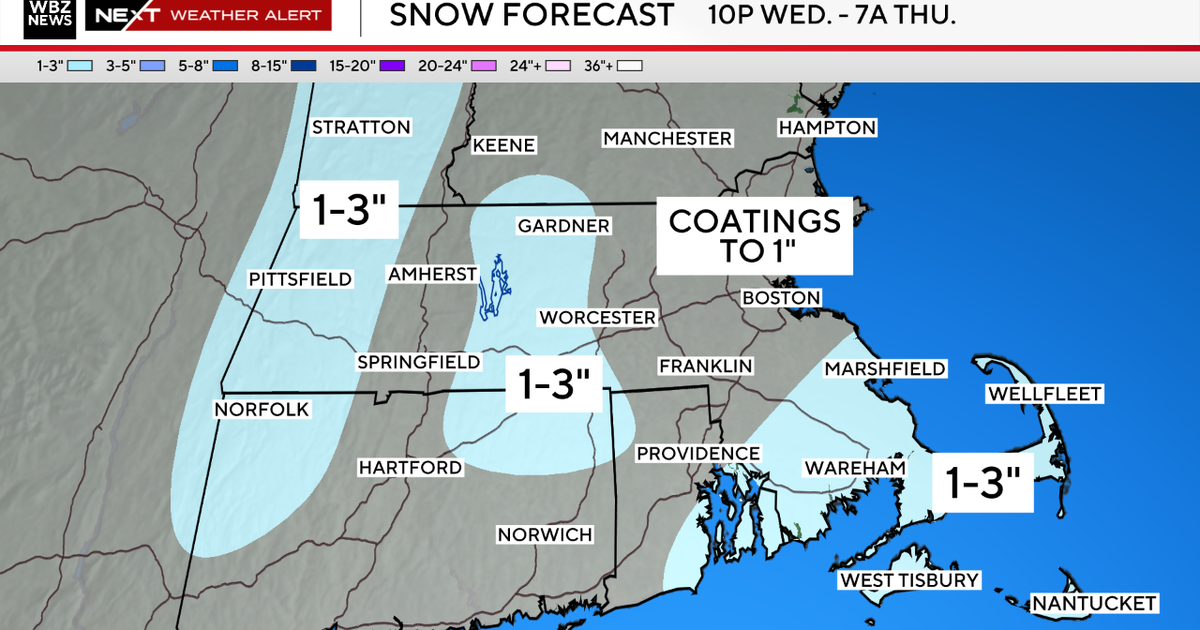Hamantaschen, a cookie bursting with history
This week at Breads Bakery in New York City, one cookie is bound to outsell the rest. "Hamantaschen are the most perfect little cookie," said owner Gadi Peleg. "The most requested item that we get to continue to do all year is hamantaschen."
Hamantaschen, a triangular-shaped cookie, is served during the Jewish holiday of Purim, which begins Wednesday.
In the days leading up to Purim, Peleg expects to sell as many as 10,000 cookies a day, with a variety of fillings: chocolate ("sort of like a brownie nestled inside the cookie"), poppy seeds, or jam.
"It's the perfect cookie because it contains what I call the golden ratio of cookie," Peleg said. "There is exactly a one-to-one ratio of filling to crust."
Stephanie Butnick, deputy editor of Tablet Magazine and host of the podcast "Unorthodox," explained how this cookie intersects with the story of Purim: "The story of Purim is actually one of the more dramatic stories in the Bible. It actually is the only story in the Hebrew Bible that doesn't mention God. It's a purely human drama. And it is extremely dramatic."
The story of Purim begins in ancient Persia, with a king, a queen, and a villain, the king's advisor, Haman. "Haman hates the Jews," Butnick told correspondent Faith Salie. "What he does not know is that Esther the queen is secretly Jewish. And so when he basically cooks up this plot to kill all the Jews in ancient Persia, Esther decides that if she wants to save the Jews she has to out herself essentially as being Jewish."
So, Esther confronts the king and ultimately convinces him to stop Haman's plot. "The Jews get saved, Haman gets killed, and that's the holiday we celebrate today," said Butnick.
The pastry, however, wasn't baked into the holiday until the 16th century, when it was inspired by the German cookie mohntaschen (mohn meaning poppy seed and tash meaning pockets).
Butnick said, "Haman is the villain of the Purim story. And so, Jews sort of said, 'Wait, what if we called this cookie a hamantaschen? And we can eat it on Purim?' And now, we have these hamantaschen which are technically Haman's pockets. But people say it's Haman's ears, people say it's Haman's hat. So, we've sort of just made this cookie into what it is that we want it to be."
And as the meaning of the triangle has evolved, so has hamantaschen itself. At Breads Bakery, chef Edan Leshnick has cooked new flavors – pizza hamantaschen, anyone? – and classics like poppy.
The process of making hamantaschen is relatively simple, and the significance of the triangle even a little silly. But when put into context, Butnick said it's a recipe for what Jewish celebrations are all about:
"To me, it's this Jewish spirit of resilience and celebration that we actually eat a cookie named after one of the top villains in Jewish history," she said.
"Yeah, it's, like, taking a bite of Jewish people's survival," said Salie.
"Yes, they tried to kill us, we won, let's eat a delicious cookie!"
RECIPE: Apple Hamantaschen from Breads Bakery
For more info:
Story produced by Sara Kugel. Editor: Remington Korper.









